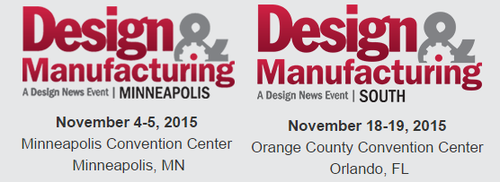October 27, 2015

A new report from NIST (the National Institute of Standards and Technology) lays out a roadmap to a lofty destination: a world in which advanced sensing, information, and communication technologies lead to manufacturing systems that operate around the clock at top efficiency with minimal faults and scrap -- in other words, peak overall equipment effectiveness (OEE).
This vision has emerged from a growing R&D effort known as prognostics and health management (PHM). PHM methods are being employing by firms in the automotive, aerospace, and heavy equipment industries to monitor the performance and operating conditions - health, that is -- of equipment, systems, and sub-systems and to estimate their future condition and remaining life. PHM can help determine when systems will need to receive maintenance or be repaired or replaced.
While PHM is related to the concept of predictive maintenance for machines, NIST sees it as the higher-level set of technologies for monitoring, diagnosis, and prognosis, which can in turn enable predictive maintenance and other practices, such as another related idea called total productive maintenance (TPM).
NIST sees PHM as a key component of the emerging smart manufacturing systems that will soon employ "more efficient, automated, programmable, and flexible forms of manufacturing to meet changing consumer demands." Smart manufacturing systems are being made possible by the convergence of technologies like sensing, automation, robotics, and additive manufacturing with rapidly advancing communication and information technologies.
NIST based its report on input received during a workshop it sponsored, during which some 60 experts from industry, academia, government, and national laboratories collaborated on identifying a pathway toward national implementation of PHM methods. One challenge in this arena is that current PHM efforts tend to be custom-made solutions that are proprietary to individual companies. NIST is trying to coordinate the efforts of the various stakeholders to create a set of standard "modular PHM capabilities that can be applied across organizations and industries and, ultimately, designed into equipment and processes," according to the agency.
One of the near-term goals of the PHM roadmap affects the design function in the business of machine and system manufacturing. The NIST report emphasizes the need for PHM to be adopted "as a component or system design attribute," similar to other machine design aspects.
WANT TO SEE MORE ARTICLES ON PREDICTIVE MAINTENANCE?
The authors of the NIST report believe that design teams should start taking into account this new factor, as "a well-functioning PHM system can have bottom-line implications similar to other traditional ones like cost, weight, and performance." The roadmap recommends that PHM stakeholders initiate demonstrations and test cases during the next few years to determine ways that "PHM can be integrated in design with little or no impact on structure or component safety."
Representatives from Boeing, Toyota, Ford, Sikorsky, and other companies participated in the NIST event. The report shies away from providing very specific case studies from these companies' applications of PHM, but it does reveal the kinds of capabilities they are pursuing.
For example, Al Salour, senior technical fellow at The Boeing Co., discussed the company's efforts at developing software-assisted diagnosis and prognosis. One of the current challenges is the difficulty of directing data toward the creation of a solution in a timely fashion. Boeing is working on developing tools to provide more actionable information and enabling quicker decision-making.
Andrew Inman of Toyota discussed the automaker's initiatives in machine reliability and maintenance and in accelerating the deployment of PHM in the company's manufacturing facilities. One problem is that manufacturing groups tend to be siloed, making collection and exchange of information difficult. "All of the systems have to work together to be effective," said the report, but this is a challenge, "due to the differences in the systems and the vast amounts of data collected."
NIST is carrying out research to help advance fundamental technologies needed for widespread deployment of standardized PHM practices. The report describes the agency's Machine Tool Linear Axes test bed, explaining that a linear axis is a vital subsystem of a machine tool, which "needs to stay online and in good condition for parts production."
Machine tools degrade during operations, but "accurately detecting degradation of linear axes is a manual and time-consuming process." The NIST test bed is focused on developing "a sensor-based method to quickly estimate the degradation of linear axes" employing a sensor box. Data can be periodically collected to enable "diagnostics and prognostics of linear axes for optimization of maintenance scheduling and part quality," ultimately leading to standards-based measurement and prediction of linear axis degradation in machines.

Design News will be in Minneapolis and Orlando in November! Design & Manufacturing Minneapolis will take place Nov. 4-5, while Design & Manufacturing South will be in Orlando Nov. 18-19. Get up close with the latest design and manufacturing technologies, meet qualified suppliers for your applications, and expand your network. Learn from experts at educational conferences and specialty events. Register today for our premier industry showcases in Minneapolis and Orlando
Al Bredenberg is a writer, analyst, consultant, and communicator. He writes about technology, design, innovation, management, and sustainable business, and specializes in investigating and explaining complex topics. He holds a master's degree in organization and management from Antioch University New England. He has served as an editor for print and online content and currently serves as senior analyst at the Institute for Innovation in Large Organizations.
[image via NIST]
About the Author(s)
You May Also Like





